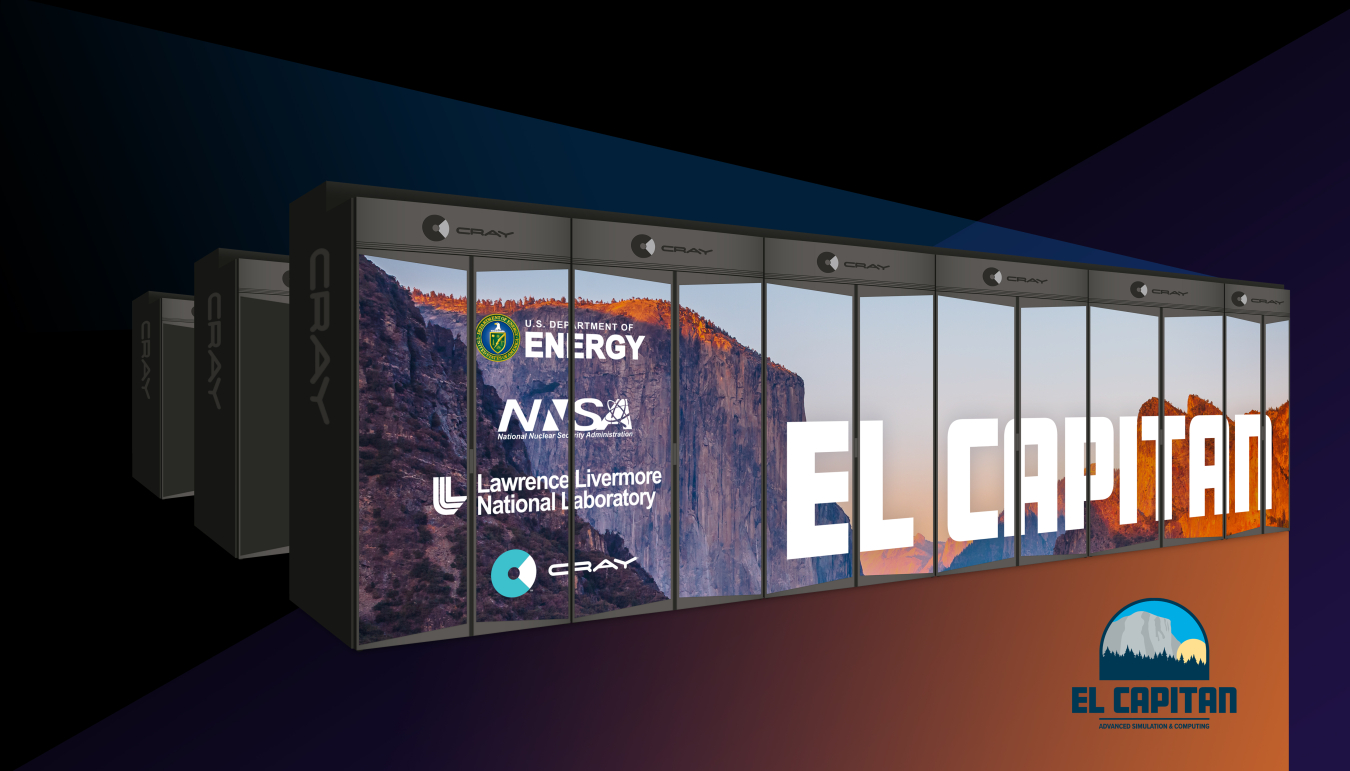'El Capitan’ at Lawrence Livermore National Laboratory will perform mission critical research to maintain U.S. nuclear weapons stockpile
August 13, 2019‘El Capitan’ at Lawrence Livermore National Laboratory will perform mission critical research to maintain U.S. nuclear weapons stockpile

The Department of Energy, National Nuclear Security Administration and Lawrence Livermore National Laboratory today announced the signing of contracts with Cray Inc. to build the NNSA’s first exascale supercomputer, “El Capitan.”
WASHINGTON, D.C. – The Department of Energy’s National Nuclear Security Administration (DOE/NNSA) has signed a contract valued at $600 million with Cray Inc. to build NNSA’s first exascale supercomputer, “El Capitan,” with an anticipated delivery in late 2022.
El Capitan will be housed at Lawrence Livermore National Laboratory (LLNL) in Livermore, California, and perform mission critical research to maintain the U.S. nuclear weapons stockpile.
“The Department of Energy is the world leader in supercomputing and El Capitan is a critical addition to our next generation systems,” said U.S. Energy Secretary Rick Perry. “El Capitan’s advanced capabilities for modeling, simulation, and Artificial Intelligence will help push America’s competitive edge in energy and national security, allow us to ask tougher questions, solve greater challenges, and develop better solutions for generations to come.”
El Capitan will be DOE’s third exascale-class supercomputer, following Argonne National Laboratory’s “Aurora” and Oak Ridge National Laboratory’s “Frontier” system. All three DOE exascale supercomputers will be built by Cray utilizing their Shasta architecture, Slingshot interconnect, and new system software platform.
“NNSA is modernizing the Nuclear Security Enterprise to face 21st century threats,” said Lisa E. Gordon-Hagerty, DOE Under Secretary for Nuclear Security and NNSA Administrator. “El Capitan will allow us to be more responsive, innovative, and forward-thinking when it comes to maintaining a nuclear deterrent that is second to none in a rapidly-evolving threat environment.”
The new system will allow researchers from all of NNSA’s weapons design laboratories – LLNL, Los Alamos National Laboratory, and Sandia National Laboratories – to run 3D simulations and calculations at resolutions that are difficult, time-consuming, or even impossible using today’s state-of-the art supercomputers.
It will achieve a sustained performance of more than 1.5 exaFLOPS, or 1.5 quintillion calculations per second, and substantially outpace LLNL’s Sierra system, which is currently the world’s second most powerful supercomputer at 125 petaFLOPS of peak performance.
Click here to learn about NNSA’s current supercomputing capabilities.
###
News Media Contact: (202) 586-4940

